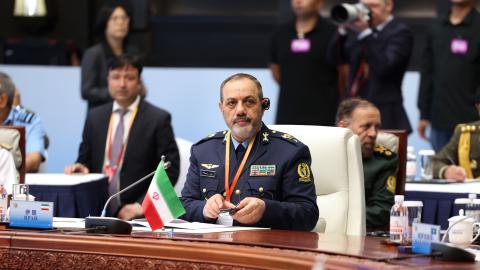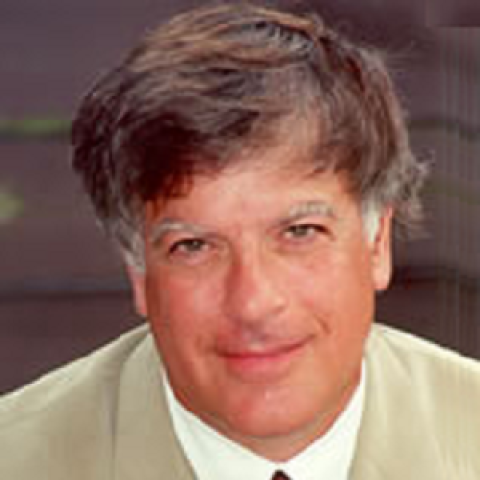Joshua Rubenstein and Alexander Gribanov (eds.), The KGB File of Andrei Sakharov, New Haven: Yale University Press, 2005, 386 pp.
In a silenced country, Andrei Sakharov was, for nearly two decades, the leading voice of democratic dissent. Living under constant surveillance, he did more than just speak out against the suppression of human rights. He appeared at the trials of dissidents, held press conferences in his apartment, and, after his forcible exile from Moscow, fought against the persecution of his own family with hunger strikes that may have hastened his death. In the end, he demonstrated, as almost no one else, the ability of an individual to withstand the pressure of a totalitarian regime.
It is this experience that is described in The KGB File of Andrei Sakharov. The book consists of a lengthy introduction by Joschua Rubinstein, the northeast regional director of Amnesty International, and 146 KGB documents on Sakharov. It is far from a complete account of Sakharovs relations with the KGB. The detailed record of years of surveillance and harassment was wiped out when the KGB reportedly burned 583 volumes of "operational documents" on Sakharov in 1988 and 1989. As a result, the full story of the KGBs intrigues against Sakharov will never be known.
Nonetheless, the documents contained in this volume are illuminating because they describe the attitude of the Soviet leadership toward Sakharov. In the process, they dispel a number of myths that still haunt Sovietological circles today.
In the first place, the documents show that, far from being indifferent to the activities of Soviet dissidents, including Sakharov, the Soviet leaders were preoccupied with the dissidents and discussed not just their activities but also their conversations, conflicts and personalities. For example, a demonstration, December 10, 1977, in Moscows Pushkin Square to mark Human Rights Day was, according to one document, planned in Sakharovs apartment. The demonstration was effectively broken up by the KGB which prevented many dissidents from ever reaching the square. Nonetheless, it was duly reported to the central committee that seven or eight "idle youths from the families of pro-Zionist elements" succeeded in gathering there.
In another report to the central committee on April 26, 1976, Yuri Andropov, the chairman of the KGB, discussed Sakharovs travels. Sakharov and his wife, Elena Bonner, had traveled to Yakutia to visit Andrei Tverdokhlebov, a close associate, who had been exiled to the village of Nyurbachan. The KGB reported that Sakharovs conversations with Tverdokhlebov were "mostly on themes of everyday life." Nonetheless, Sakharovs travels were disturbing.
Andropov suggested that members of the Academy of Sciences should speak to Sakharov and "point out to him the undesirability of doing things that might jeopardize his health."
Besides the attention paid by the leadership to the activities of dissidents, the documents also show the extent to which the treatment of dissidents was influenced by the attitude of the West.
One example was the decision of the Soviet authorities in 1977 to allow Sakharovs wife to travel to Italy for eye surgery. Such requests were routinely rejected for Soviet citizens but, in a note to the central committee, Andropov said Bonner should be allowed to leave. He said she could be expected to use her period abroad for "anti-social" purposes but "the very fact that she was permitted to go to Italy will significantly diminish her level of activity." At the same time, "rejection of a trip for medical treatment will entail large costs in terms of propaganda."
The same concern for the reaction of the outside world was reflected in the deliberations over how to treat Sakharov. In a document summarizing the case against Sakharov, Andropov concluded that Sakharovs activities fell completely within the purview of article 64 (treason to the Motherland) and article 70 (anti-soviet agitation and propaganda). Nonetheless, he said that putting Sakharov on trial would be inadvisable. He said it would take two or three months for the investigation and trial during which time the West would organize "vociferous anti-soviet campaigns." Under the circumstances, he recommended that Sakharov be expelled from Moscow to a part of the country closed to foreigners. Seven years later, with the beginning of perestroika, the politburo again turned its attention to the question of Sakharovs residency and decided to allow him to "return to Moscow because his return to Moscow will mean fewer political costs than his continued isolation in Gorky."
A final point made by the KGB documents on Sakharov and for many, the most surprising is that the Soviet leaders did not take their internal deliberations seriously. This is demonstrated by the fact that the KGBs reports are full of inventions. In one document, the KGB reported that Sakharov was considering self immolation, a complete fabrication according to Bonner. The KGB reported that an invitation from Israel to the fiancé of Bonners son came from "an alleged Aunt Feigin, who, in fact, does not exist." In fact, Tamar Feigin did exist. She was the mother of Bonners son-in-law and living in Israel. The KGB reported that in 1985, Bonner wanted to leave the Soviet Union for medical treatment after a Soviet-American summit meeting in Geneva was over. The connection with the meeting in Geneva was an invention.
The predilection for lying lends a chilling note to one of the documents, a KGB report to the central committee, which denounced as libelous, statements by Sakharov accusing the KGB of the murder of the translator, Konstantin Bogatyrev and several persons who had visited Sakharov. The document said that Bogatyrev died in a drunken brawl although he was found in the darkened stairwell of his apartment building, having been killed by a blow to the head. The KGB said that the others died in "various everyday situations." The KGB never indicated publicly that it knew anything about these mysterious deaths.
As a whole, The KGB File of Andrei Sakharov contains an important lesson for American policy makers and an ironic comment on the meaning of "realism." Realists like Nixon and Kissinger sought to keep human rights off the agenda in their dealings with Moscow for fear that they would jeopardize the higher interests of détente. A subtext of this argument was that pressure on human rights would not do any good anyway.
Accepting a totalitarian regime as a trustworthy negotiating partner, however, meant effectively strengthening it without any guarantee that it would honor its commitments. It was this paradox of détente that troubled Sakharov who argued that détente was inherently unreliable if it was not matched with progress in the Soviet Union on human rights. His attempts to enlighten the West, in turn, were one of the reasons that Andropov described Sakharov before an audience of KGB officers as "Domestic Enemy Number One."
Ironically, as the documents in this collection indicate, it was probably Andropov who understood best why the dissidents were important and their suppression had to continue. "The renunciation of active measures to terminate the politically harmful activities of 'dissidents'," he wrote to the central committee, "could be fraught with the most serious negative consequences. It is impossible to make concessions of principle on this question, since these would inevitably lead to further unacceptable demands on us." In other words, the authorities had no choice but to suppress the dissidents because tolerance for dissent was the first step in the dismantling of the totalitarian regime.
















